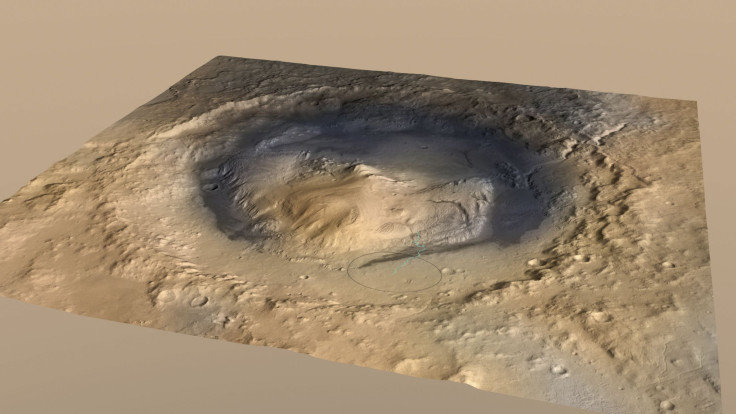NASA’s Curiosity Mars Rover Discovers How Ancient Lakes Shaped Red Planet’s Landscape

Scientists have used data provided by NASA’s Curiosity Rover to find that Mars’ Mount Sharp, which forms the central peak within the Gale crater, was likely built from sediment deposited at the bottom of a large lake that existed on the red planet tens of millions of years ago.
The latest findings by the Curiosity rover suggest that ancient Mars had a climate that helped produce long-lasting lakes at many locations on the planet, which has an extremely low atmospheric pressure, about 100 times thinner than Earth's.
“If our hypothesis for Mount Sharp holds up, it challenges the notion that warm and wet conditions were transient, local, or only underground on Mars,” Ashwin Vasavada, Curiosity deputy project scientist at NASA, said in a statement. “A more radical explanation is that Mars' ancient, thicker atmosphere raised temperatures above freezing globally, but so far we don't know how the atmosphere did that.”
Why the three-mile-tall Mount Sharp sits in a crater has been a challenging question for researchers. However, scientists said that they are making progress in solving the mystery.
“Where there's now a mountain, there may have once been a series of lakes,” John Grotzinger of the California Institute of Technology in Pasadena said, in the statement.
According to scientists, ancient Martian rivers carried sand and silt to the lake, and deposited the sediments at the mouth of the river to form deltas -- a cycle that occurred repeatedly -- similar to those found at the mouths of rivers on Earth.
After the crater filled to a specific height and the sediment hardened into rock, the accumulated layers were eventually shaped into a mountain by wind erosion.
“As Curiosity climbs higher on Mount Sharp, we will have a series of experiments to show patterns in how the atmosphere and the water and the sediments interact,” Grotzinger said. “We may see how the chemistry changed in the lakes over time.”
© Copyright IBTimes 2024. All rights reserved.






















